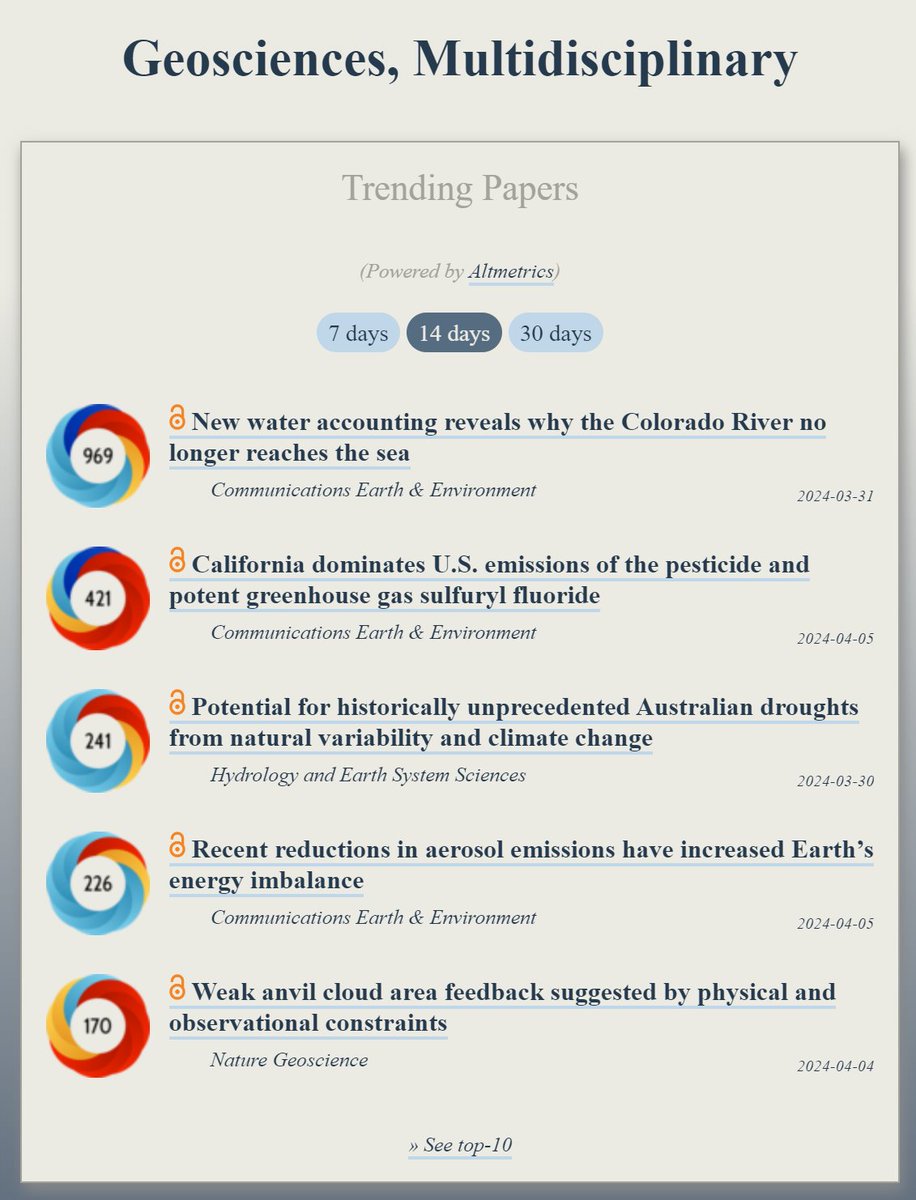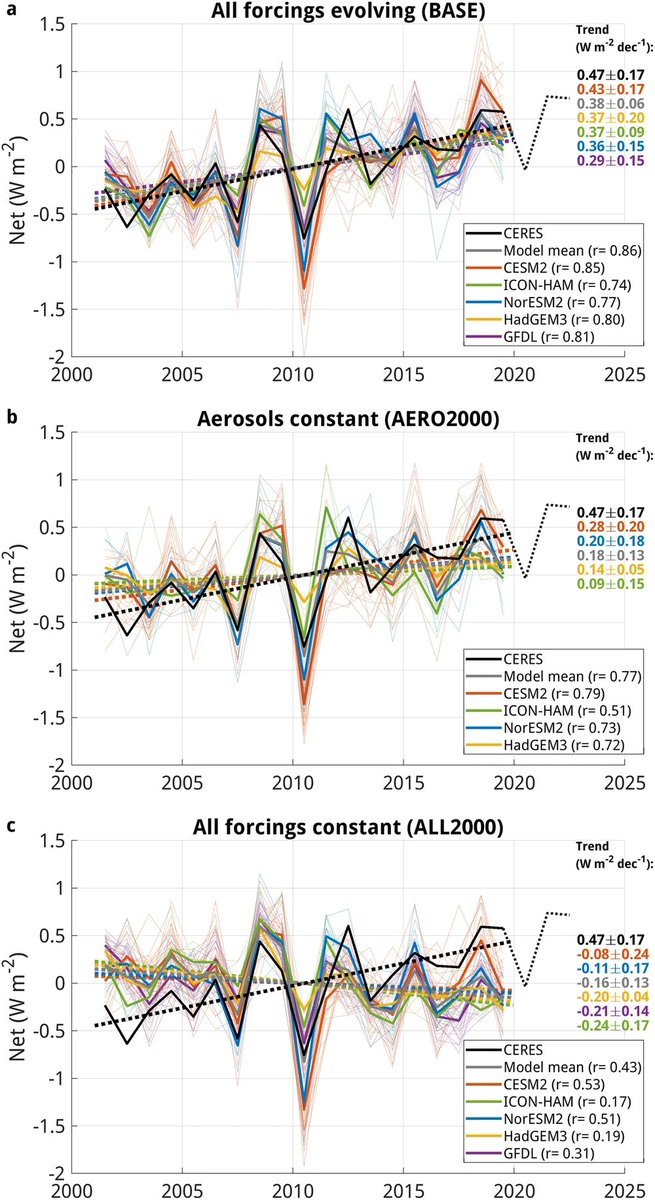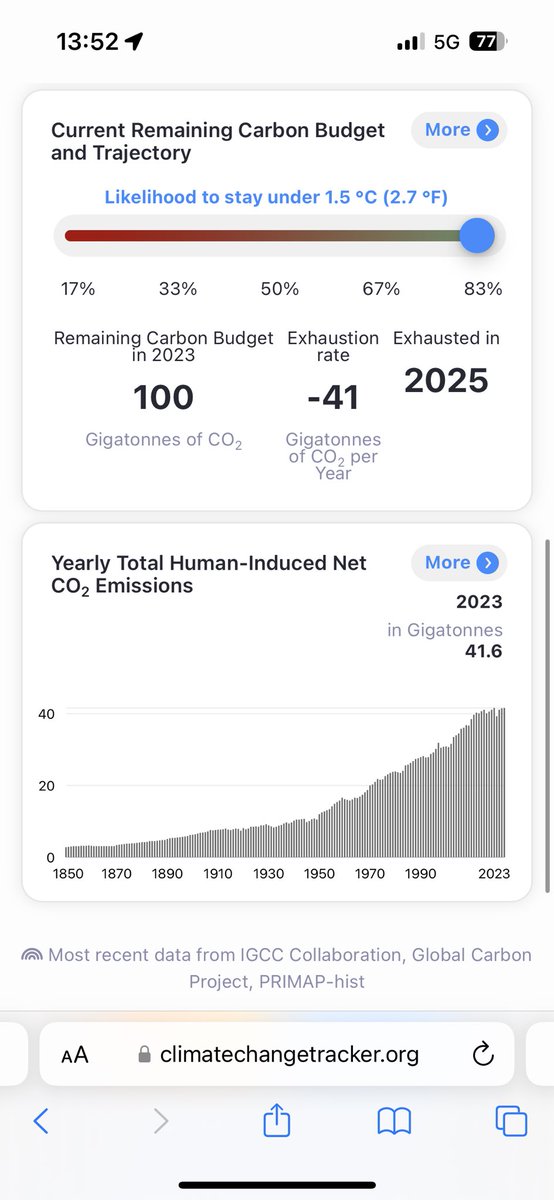
Gunnar Myhre
@gunnarmy
Climate researcher at CICERO og langrennsinteressert
ID:102024049
05-01-2010 10:25:26
1,0K Tweets
504 Followers
271 Following

Trending in #Geosciences :
ooir.org/index.php?fiel…
1) New water accounting reveals why the Colorado River no longer reaches the sea (Communications Earth & Environment)
2) California dominates U.S. emissions of the pesticide & potent greenhouse gas sulfuryl fluoride (Communications Earth & Environment)
3) Potential for




Clearer skies may be accelerating global warming
Great article on the ongoing science by
Paul Voosen @[email protected]:
science.org/content/articl…





NEW – Factcheck: Why the recent ‘acceleration’ in global warming is what scientists expect | Zeke Hausfather
Read here: buff.ly/3U4HvN6


A major part of the increase in Earth's energy imbalance observed during the period 2001-2019 can be attributed to a reduction in #anthropogenic aerosol #emissions .
📰👉nature.com/commsenv/resea…
CICERO Gunnar Myhre Tim Andrews Johannes Quaas Shiv Priyam Raghuraman


















